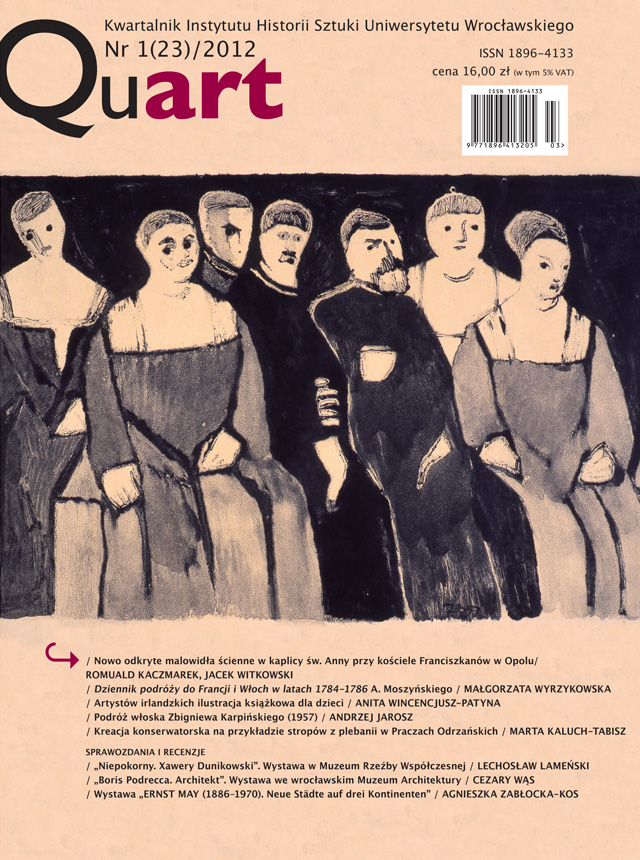Nowo odkryte malowidła ścienne w kaplicy św. Anny przy kościele Franciszkanów w Opolu. Cz. I
Newly discovered wall paintings in the chapel of St. Anna at the Franciscan church in Opole. Part I
Author(s): Jacek WitkowskiSubject(s): Fine Arts / Performing Arts, Visual Arts, History of Art
Published by: Wydawnictwo Uniwersytetu Wrocławskiego
Summary/Abstract: In 2007 the original ceiling paintings were discovered in St. Anna chapel of the Franciscan church in Opole. Since the second half of the 14th c. the chapel was also a necropolis of the Piasts of Opole. Style of the paintings allows their dating back from the beginning of the 16th c., most certainly from 1509. Mixed plant motives and images of angels playing are accompanied by the main subject of a set of ten (originally twelve) coats of arms. Reading their message reveals close relations between the decoration and Silesian and Central European political machinations of that time, namely between courts of Prague, Buda and Cracow, in which leading persons were involved. Except for a group of Silesian duchies or dukes’ coats of arms there are repeated three times coats of arms of Margrave Georg Hohenzollern on Ansbach and his wife, Croatian Princess Beatrix Frangipan (died in 1510). The idea of the heraldic programme may be summarised as follows: Georg Hohenzollern, as related with ducal houses in Silesia, with Prince John II of Opole in the first place, is predestinated to succeed in the Duchy of Opole, as well as in other duchies belonging to John. Performing of the paintings was thought by Margrave George as a distinct signal for rivals and a pictorial argument for his inheritance, presented in the very heart of the duchy he wanted to gain. Placing this programme in the burial chapel of the Piasts of Opole is also meaningful, as its ceiling, built in the times of Prince John II is decorated by a key-stone with sculpted coat of arms of this Piast branch. After a few years a new ideological programme of painted heraldic decoration directed to the future and continuation was put onto the older symbolic layer of the ceiling with a heraldic sign referring to the past and the memory of ancestors and relatives.
Journal: Quart
- Issue Year: 23/2012
- Issue No: 1
- Page Range: 3-18
- Page Count: 16
- Language: Polish

